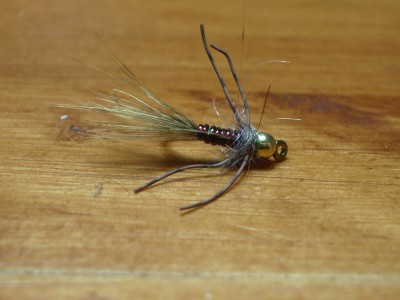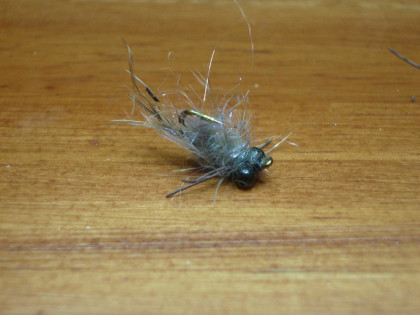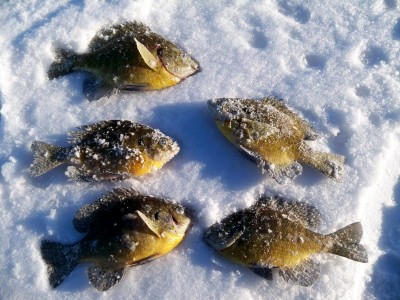Tight lining has taken the panfish ice fishing scene by storm in the past few years, and for good reason. This highly productive technique utilizes ultra-quick sinking tungsten jigs in combination with realistic, imitative ice flies on the same line. I’ve been tying, testing, and tweaking the design of a few ice flies over the past two seasons with great results on the ice. Here are two of my most productive patterns for hardwater panfish.


Spikes (mayfly nymphs) and scuds are a favorite food source for winter panfish. The Slab Spike, with its segmented body, rubber legs, and seductive chickabou tail, closely imitates a small mayfly nymph. The ‘Gill Shrimp is a good match for freshwater shrimp that live among the weed beds.
For me, the key trigger in ice flies is movement. Marabou, fur, dubbing, and feathers are all great ways to add movement to your flies, but my favorite materials are chickabou and small rubber legs. Chickabou is almost like a marabou feather, but it comes off the back of a chicken and has finer fibers that breathe, twitch, and quiver convincingly with the slightest lift of the rod tip. Another important factor to think about when tying ice flies is durability. Removing deeply inhaled bugs with pliers is the death of many small ice flies, so while a body material like pheasant tail might catch fish just fine, it won’t hold up as well as micro tubing and dubbing.

Winter panfish have a much slower metabolism than summer fish do, so that means they will be less aggressive and not as willing to attack a large, gaudy fly. Small sizes from #12 at the very largest down to a #16 is in order, and a sparsely tied fly with a skinny body will help with profile and sink rates. Again, micro tubing, dubbing, and thread bodies are my favorites for bodies. Flash is an essential ingredient to a good pattern, but use it sparingly. Too much flash or a large, overdressed fly can quickly put off big panfish. I usually tie my flies with a gold bead and one or two strands of flashabou on each side of the tail.
Ice flies are great for turning negative, cold front slabs into biters. I’ve watched many fish on my underwater camera shy away from the big, juicy waxie-tipped jig, then slowly tilt up and inhale the ice fly. Slab bluegills and crappies can get pretty finicky under the ice, and ice flies are sometimes the only way to hook mid-winter panfish.
Get some hand-tied Slab Spikes in our store.
Tight Lines,
Conner
